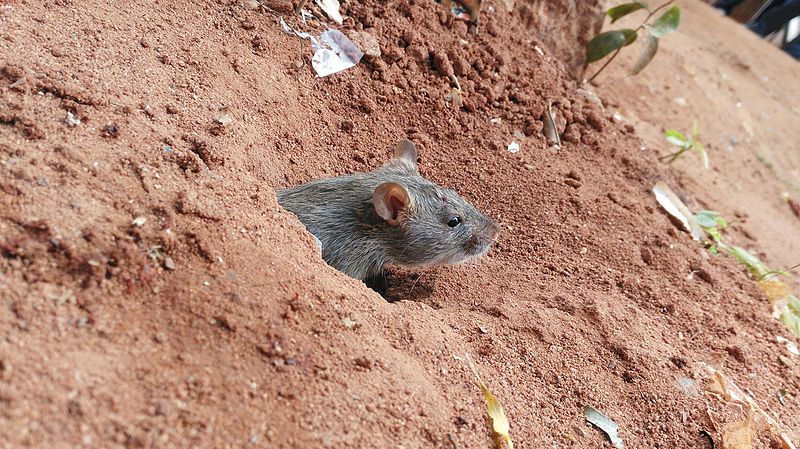Rats have long tails primarily for balance, thermoregulation, and communication.
Picture this you’re watching a rat navigate a narrow ledge with perfect precision. What’s their secret weapon? Their long, flexible tail! It’s more than just a quirky feature; it’s a multifaceted tool that helps rats in ways you might never have imagined.
From maintaining their balance on the tightest of ropes to keeping cool in the scorching heat, a rat’s tail is a marvel of natural engineering. So, why do rats have long tails? Let’s dive into the fascinating world of these tiny acrobats and discover the surprising purposes behind their lengthy appendages.
Key Takeaways:
- Rats use their tails for balance while climbing and navigating tight spaces.
- The tail helps regulate body temperature by dissipating heat.
- Tails play a role in social communication and interactions among rats.
- Rats’ tails are also crucial for survival, aiding in escape from predators.
The Role of Balance in a Rat’s Tail
Rats are like the gymnasts of the rodent world, and their tails are the balance beams they never leave behind. Ever wondered how these little creatures scamper across power lines or navigate the narrowest of ledges without a hitch? It’s all thanks to their incredible tails.
Stability and Precision: Rats’ tails act as a counterbalance, giving them the stability they need to perform daring feats of agility. When a rat moves, its tail shifts position to counteract any wobble, keeping the rat steady and on course. Imagine walking on a tightrope without a balancing pole—that’s a rat without its tail!
Versatile Climbers: In the wild, rats are often seen climbing trees, scaling walls, and navigating rocky terrains. Their tails are essential tools in these environments. By swinging their tails, they can maintain balance, make sharp turns, and even hang from branches temporarily if they need to. It’s like having an extra limb dedicated to balance.
Comparisons with Other Animals: Rats aren’t the only animals with this nifty adaptation. Squirrels, monkeys, and even some lizards use their tails for balance. However, rats have perfected the art, using their tails not only for steadying themselves but also for intricate maneuvers in complex environments.
Next time you see a rat performing its high-wire act, take a moment to appreciate the incredible engineering of its tail. It’s a built-in balance tool that’s as essential to a rat as a tightrope walker’s pole is to them.
Rats are known for their adaptability and resilience, and one of their secret weapons in staying cool is their tail. Yes, that long, skinny appendage isn’t just for balance—it’s also a sophisticated cooling system.

Thermoregulation: Keeping Cool with Their Tails
Rats are known for their adaptability and resilience, and one of their secret weapons in staying cool is their tail. Yes, that long, skinny appendage isn’t just for balance—it’s also a sophisticated cooling system.
The Biology Behind Thermoregulation: A rat’s tail is packed with blood vessels, which makes it an excellent tool for regulating body temperature. When a rat gets too hot, blood flows to the tail, where heat is dissipated into the air. This process is similar to how elephants use their ears to cool down. The tail acts like a radiator, effectively cooling the rat’s entire body.
Surviving in Hot Environments: Rats thrive in a variety of environments, from urban areas to deserts. In hotter climates, their tails are especially crucial. By releasing excess heat through their tails, rats can maintain a stable body temperature even when the surrounding temperature soars. This adaptability allows them to be active during times when other animals might need to rest.
Physical Exertion and Heat Dissipation: When rats engage in vigorous activities, such as running or climbing, their bodies generate heat. To prevent overheating, rats rely on their tails to help release this excess heat quickly. It’s like having an in-built cooling fan that kicks in during high-energy moments. This function is vital for their survival, enabling them to escape predators and forage for food without succumbing to heat stress.
The Marvel of Natural Engineering: The efficiency of a rat’s tail in thermoregulation is a testament to nature’s ingenuity. It’s fascinating to think that such a small and seemingly simple part of their anatomy can play such a critical role in their survival. Whether they’re in the wild or in urban settings, rats’ tails ensure they stay cool and comfortable, no matter how hot things get.
Communication and Social Interaction
Rats are incredibly social creatures, and their tails play a pivotal role in how they communicate and interact with one another. Beyond balance and thermoregulation, a rat’s tail is a versatile tool for social signaling and establishing social hierarchies.
Tail Movements and Signals: Rats use their tails to send a variety of signals to each other. For instance, a quick flick of the tail can indicate annoyance or agitation, while slow, deliberate movements might signal curiosity or caution. These subtle tail movements are crucial for rats to convey their feelings and intentions without making a sound.
Establishing Social Hierarchies: In rat colonies, social hierarchies are a big deal. Dominant rats often use their tails to assert their status. A dominant rat might hold its tail high and stiff to show confidence and control, whereas a submissive rat may keep its tail low and still to avoid confrontation. This non-verbal communication helps maintain order and reduce conflicts within the group.
Behavioral Cues and Bonding: Rats also use their tails to show affection and bond with one another. You might see a rat wrapping its tail around a fellow rat during grooming sessions or while resting together. This behavior strengthens social bonds and promotes group cohesion. It’s their way of saying, “We’re in this together.”
Importance in Social Structures: The tail’s role in communication is vital for rats’ survival. Effective communication helps rats coordinate activities like foraging and nesting. It also plays a role in warning others of potential dangers. For instance, a rat might thump its tail on the ground to alert its peers to a nearby predator. This quick, silent warning can make all the difference in a life-or-death situation.
The next time you observe rats interacting, take note of their tails. They’re not just passive followers but active participants in the complex dance of rat social life. Through a series of flicks, twitches, and positions, rats convey a rich tapestry of emotions and intentions, ensuring they stay connected and coordinated within their community.
Survival Mechanisms: Escaping Predators
In the wild, survival is a rat’s primary goal, and their tails are essential tools for evading predators. These agile creatures have developed several clever strategies to use their tails as lifelines in dangerous situations.
Quick Movements and Maneuverability: Rats are known for their quick, darting movements, and their tails play a crucial role in these agile escapes. When a rat senses danger, it can make rapid changes in direction, thanks in part to its tail, which acts as a rudder. This ability to zigzag swiftly helps rats elude predators like cats, birds of prey, and snakes, which might find it challenging to match the rat’s erratic movements.
Distraction and Decoy: A rat’s tail can also serve as a distraction. When threatened, a rat might wiggle its tail to draw a predator’s attention away from its body, giving it a better chance to escape. In some cases, predators might grab the tail, allowing the rat to break free and flee, sacrificing a small part of its tail but saving its life. This tactic, known as autotomy, is more common in other animals like lizards, but rats have been observed using similar strategies.
Enhanced Climbing Abilities: In moments of peril, rats often seek refuge in high places or narrow crevices. Their tails provide the balance needed to climb quickly and efficiently. Whether scaling a tree, a wall, or a piece of furniture, a rat’s tail ensures it can reach safety swiftly. This climbing prowess can mean the difference between life and death when a predator is in hot pursuit.
Tales of Survival: There are numerous anecdotes and studies documenting how rats use their tails to survive encounters with predators. For example, urban rats have been observed using their tails to help navigate tight, cluttered spaces, making it harder for larger predators to catch them. In the wild, rats have been seen employing their tails to balance on thin branches and wires, where predators can’t follow.
Comparison with Other Animals: While rats’ use of their tails for survival might not be as dramatic as a lizard’s ability to shed its tail, it’s just as vital. Many animals have evolved to use their tails as survival tools, each in unique ways. For rats, the tail’s versatility in aiding quick escapes, providing balance, and acting as a decoy highlights its critical role in their survival strategy.
So, the next time you see a rat making a daring escape, remember that its tail is more than just a trailing appendage. It’s an essential survival tool, honed by evolution to help these resourceful rodents evade danger and live to scurry another day.
Anatomy of a Rat’s Tail
The anatomy of a rat’s tail is a marvel of biological engineering, perfectly adapted to support its various functions. From balance and thermoregulation to communication and survival, the structure of a rat’s tail is integral to its success.
Structure and Components: A rat’s tail is composed of three main parts: bones, muscles, and skin. The skeletal structure consists of vertebrae, which are small, flexible bones that provide the tail with its remarkable range of motion. These vertebrae are connected by joints, allowing the tail to bend and twist with ease. Surrounding the bones are layers of muscles, tendons, and ligaments that facilitate movement and control. The skin covering the tail is thin but tough, equipped with blood vessels that play a key role in thermoregulation.
Muscles and Movement: The muscles in a rat’s tail are specialized to provide both strength and flexibility. These muscles enable the tail to perform a variety of movements, from subtle twitches to rapid swings. The complex muscle arrangement allows rats to use their tails for precise balancing acts and quick directional changes, crucial for navigating their environments and escaping predators.
Blood Vessels and Thermoregulation: The tail’s skin is richly supplied with blood vessels, making it an effective tool for regulating body temperature. When a rat needs to cool down, blood flows to the tail’s surface, where heat is dissipated into the environment. This vascular network not only helps in thermoregulation but also ensures that the tail receives a good supply of nutrients and oxygen, keeping it healthy and functional.
Nerve Endings and Sensitivity: Rats’ tails are also equipped with numerous nerve endings, making them highly sensitive to touch. This sensitivity helps rats navigate through tight spaces and detect potential threats. The tactile feedback from the tail aids in balance and spatial awareness, allowing rats to move confidently through complex terrains.
Healing and Regeneration: Interestingly, rats have some ability to heal minor injuries to their tails. While they can’t regenerate lost segments like some reptiles, rats can recover from cuts and abrasions relatively quickly. The robust blood supply and active cellular response in the tail’s skin contribute to its healing properties.
Interesting Facts:
- The length of a rat’s tail can vary significantly depending on the species. Some rats have tails that are longer than their bodies, while others have shorter, sturdier tails.
- Despite their thin appearance, rat tails are incredibly strong and can support the rat’s weight during climbing or hanging.
- The skin on a rat’s tail is often covered with fine scales, which provide additional protection and help with grip during climbing.
Understanding the anatomy of a rat’s tail gives us insight into how these small creatures have adapted to their environments. Each component of the tail is meticulously designed to serve multiple functions, making it an essential part of a rat’s survival toolkit. So, the next time you observe a rat using its tail, you’ll appreciate the intricate structure that makes all those remarkable feats possible.
Common Myths and Misconceptions
Rats have long been the subject of folklore and urban legends, and their tails, in particular, have sparked many myths and misconceptions. Let’s debunk some of these myths and shed light on the fascinating truths about rat tails.
Myth: Rat Tails Are Just Decorative Features One common misconception is that a rat’s tail serves no real purpose beyond aesthetics. This couldn’t be further from the truth. As we’ve explored, rat tails are multifunctional tools essential for balance, thermoregulation, communication, and survival. Far from being mere decorations, they are vital components of a rat’s anatomy and daily life.
Myth: Rats Can Regenerate Their Tails Like Lizards Another widespread myth is that rats, like some lizards, can regenerate their tails if they lose them. While rats have a remarkable ability to heal minor injuries to their tails, they cannot regenerate lost segments. If a rat’s tail is severed, it will not grow back. This misconception likely arises from confusion with lizards and other reptiles known for their regenerative abilities.
Myth: Rat Tails Are Dirty and Disease-Ridden Rat tails often get a bad rap for being dirty and carriers of disease. In reality, a rat’s tail is no dirtier than any other part of its body. Rats are surprisingly clean animals, spending a significant amount of time grooming themselves and each other. While it’s true that rats can carry diseases, their tails are not uniquely more likely to be contaminated than their paws or fur.
Myth: Rats Use Their Tails to Strangle Prey Some people believe that rats use their tails to strangle or capture prey. This myth likely stems from confusion with other animals, such as certain types of snakes. Rats do not use their tails to hunt or capture prey; instead, their tails are primarily tools for balance, communication, and temperature regulation.
Clarifying Misconceptions with Scientific Evidence: Scientific studies and observations of rat behavior have provided clear evidence to debunk these myths. For example, research has shown that rat tails play a crucial role in thermoregulation, with blood vessels in the tail helping to dissipate heat. Behavioral studies have also highlighted the importance of tails in social interactions and communication among rats.
Fun Facts That Challenge Popular Beliefs:
- Contrary to the belief that rats’ tails are dirty, rats are meticulous groomers and keep their tails clean.
- The structure of a rat’s tail is similar to that of a human spine, with vertebrae, muscles, and skin all working together to provide flexibility and strength.
- Rats can lose parts of their tails to predators and still survive, thanks to their ability to heal, but they cannot regenerate the lost part.
Conclusion
Rats, with their remarkable adaptability and intelligence, owe much of their success to their long, versatile tails. These appendages are far more than just extensions of their bodies; they are essential tools that contribute to a rat’s survival and daily activities in numerous ways.
We’ve explored how rats use their tails for balance, allowing them to navigate narrow ledges and tightropes with agility that rivals any acrobat. We’ve delved into the fascinating role of thermoregulation, where a rat’s tail acts as a natural cooling system, helping them stay cool in hot environments. We’ve uncovered the sophisticated social signals conveyed through tail movements, highlighting the importance of tails in communication and social interaction within rat communities. Additionally, we’ve seen how rats use their tails to escape predators, making quick, agile movements that are crucial for their survival.
The intricate anatomy of a rat’s tail, with its bones, muscles, blood vessels, and nerve endings, is a testament to nature’s ingenuity. Each component plays a critical role in enabling the tail to perform its various functions, from balance to thermoregulation and communication to survival.
We’ve also debunked common myths and misconceptions about rat tails, shedding light on the true nature and importance of these appendages. By understanding the realities behind these myths, we can appreciate rats as the fascinating and resourceful creatures they are.
So, the next time you see a rat scurrying around, take a moment to marvel at its tail. It’s not just a trailing appendage; it’s a marvel of natural engineering, a multifunctional tool that plays a vital role in the rat’s everyday life. Whether balancing on a tightrope, cooling off on a hot day, communicating with peers, or escaping a predator, the rat’s tail is a key player in its survival and success. Embrace the wonder of this often-overlooked feature and appreciate the incredible adaptability it represents.














